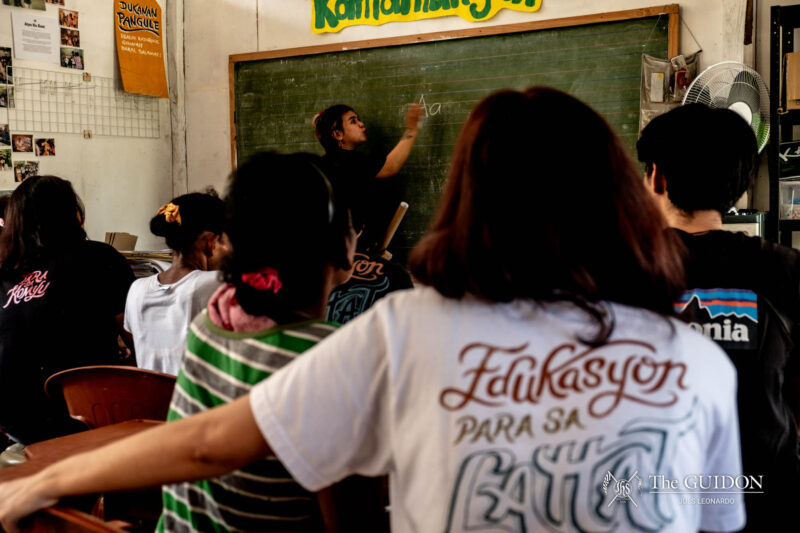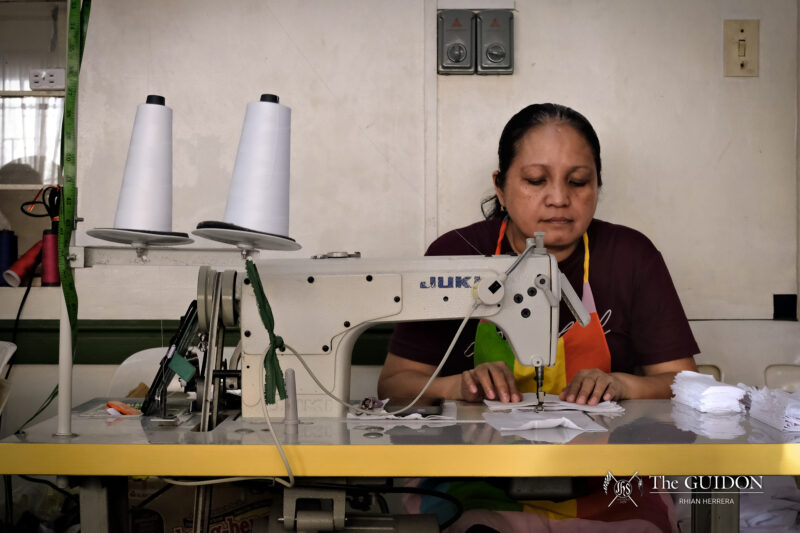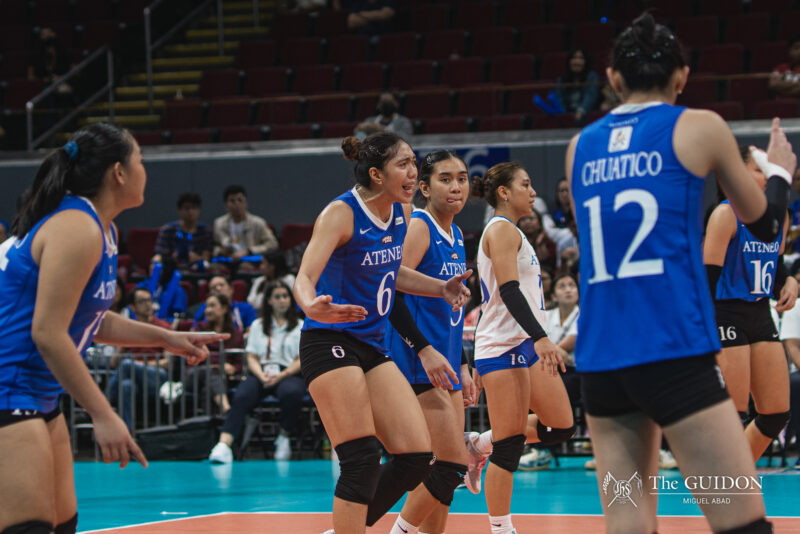The sun is scorching in Barangay Pinagsamahan in Taguig City. Ateneans and local villagers are standing side by side passing heavy bricks and pails of cement to each other. It is another typical morning for the neighborhood as people are building houses that will soon become the villagers’ new homes.
What is happening in Barangay Pinagsamahan is a project of Gawad Kalinga (GK), a Philippine-based housing and community development program that aims to transform all the slum areas in the country into beautiful villages. The Ateneans helping the villagers from Taguig are student volunteers from the student arm of the GK-Ateneo Coordinating Office.
To date, GK-Ateneo has already taken part in building eight finished communities in Nueva Ecija, Bicol, and Payatas. It continues to work in these communities through sustainability programs such as health, productivity, and youth development.
Breaking barriers
It is noon and the Ateneans are taking a break from building. They go to their favorite buko (coconut) juice stand across the construction site. Some go down the street to Ricardo’s Carinderia. Like homegrown locals from Taguig, the students warmly greet the villagers by first name basis, casually catching up on each other’s lives.
Volunteer Charlotte Ragos (IV BS CTM) says that treating the poor as one’s equal is the only way one can truly reach out to them. Through her experiences in GK, she has witnessed how connecting this way to the people from Taguig makes her understand and relate better to them.
“The poor are so disconnected from people like us—people different from them,” says GK-Ateneo Coordinator Mark Cruz. “In GK, there is a perfect chance for [diverse people] to intermingle with each other, thereby exposing the poor to optimistic and hopeful people like us.”
Cruz believes that the reason poor people do not have hope is that they are surrounded by hopelessness. For him, GK is exactly what the communities need.
A better life in hope
“The idea is to make the people in the communities get on their feet,” says Juno Alcantara, GK-Ateneo program officer for community development. While GK helps, the community also takes action. The housing and sustainability programs GK provides entail much effort from the communities for the programs to be effective.
“Araw-araw kaming pinapagawa (We are required to build everyday),” says 51 year-old Mayet Sarmiento, a resident in Barangay Pinagsama. “Pero okay lang sa amin; masaya kami’t binigyan kami ng oportunidad na magkaroon ng magandang tirahan (But it is ok; we are happy that we are given an opportunity to have beautiful homes).”
When asked how GK has helped them as a community, Sarmiento says, “Lahat kami dito nagbabagong buhay (All of us here, our lives are changing).” Behind her, villagers continue to build non-stop under the sultry weather.
Sarmiento adds, “Kung dati ang tingin namin wala na talagang pakialam ang mga tao sa aming mahihirap, ngayon nagkaroon kami ng pag-asa (If back then we thought no one cared for poor people like us, now, we have hope).”
It’s the thought that counts
Despite its extensive efforts, GK is not perfect, says Office for Social Concern and Involvement Formator Dambo Pornela. He says that GK is often talked about as a flawlessly executed program. According to him, some students who have taken GK as their National Service Training Program get disappointed to find out that their assigned areas are with a community that is not as united and organized as they thought.
Pornela recalls from experience how fighting and other conflicting issues among the people have hampered the development of some communities. He says that Ateneans have to understand that all communities are different and the success of the GK system rests on the people too.
“The impact of GK really depends on how open the students are to the experience,” says Pornela. “It is then that they will see different aspects of the situation.”
French student volunteer Pierre Henri, for example, shares how his experience in GK-Ateneo has changed his notion about helping the country. “In GK, I realized that people needed more than money. They needed people with a heart who will give their time to offer a helping hand,” says Pierre. He says that, in France, charity was all about donating money to those in need. Beyond the donations, he says, one tends to forget about the people.
Pierre was a foreign exchange student last year from Management Institute of Paris. He extended his stay in the Ateneo to work full-time for GK. Now, he works for Serving in God’s Army, a child and youth development program.
Hoping to bring the GK concept to his school in France when he returns, Pierre believes that even first-world countries need to learn how to build a united, truly whole nation.
“The first thing that impressed me [about GK] was the massiveness of what the success of it would imply for the future of the country and the world at large,” says another foreign student volunteer Calvin Keen who is Filipino-American. “I thought, if this is real, nothing else could be this exciting!”
Calvin is currently a junior in Georgetown University in Washington, D.C. In 2006, he put his studies on hold and enrolled as a non-degree student in the Ateneo to pursue GK work. “GK embodies the greatness of the Filipino,” says Calvin. “Hence, as a Filipino, I became secure and proud of who I am.”
Calvin, a dual citizen, realized that his involvement in the GK had to go beyond his work in the villages and encompass his own experience as a Filipino. He is currently building new GK teams in the U.S. Calvin says that next June, GK will be holding its first Global Summit on the campuses of Harvard and Massachusetts Institute of Technology in Cambridge.
Nation building
With future projects in the works and homes that have yet to be built, the volunteers know that GK has a long way to go. But back in Taguig, as the sun begins to set, the Atenean volunteers, seemingly unfazed, still continue to build. Their clothes are damp with sweat, their skin burnt and stinging from the sun, their faces are smeared with grime, their pants and shoes are mostly covered in mud.
While the village is still under construction, the scenario paints out a clear, conclusive picture: To be Atenean is indeed to be a man for others—in this case, a man who builds homes with and for the poor.






